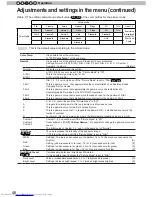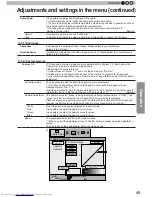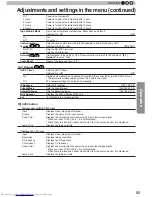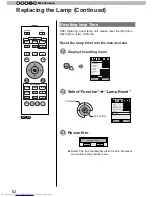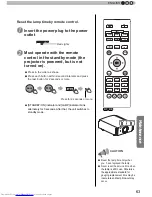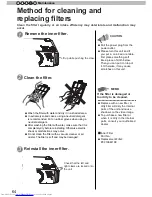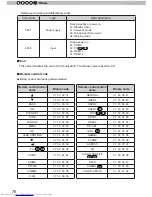
58
Operation
3
Separate images which can be seen by the right eye and left eye, respectively, are taken and produced
separately. Therefore, the image for the left eye is only visible to the left eye, and the images for the right
eye only or the right eye. The Human brain perceives stereoscopic images based on image information on
both sides.
The closer one looks at stereoscopic images, the greater the binocular disparity, which means greater
perception of outward projection. At the same time, the focus has to
fi
t the screen, but the projecting image
and the focus cause a great contradiction. This causes visual fatigue and discomfort.
Left-eye image
Right-eye image
Stereoscopic
video image
CAUTION
In most cases, 3D images taken
or produced are horizontally
arranged respectively. If these
images were not horizontally
arranged for left and right eye
movement when watching,
the brain could not perceive a
stereoscopic image, but would
still recognize a double image. As
such video images can cause 3D
sickness, please do not hold the
3D glasses slanted relative to the
video images.
CAUTION
Please watch from a distance three times the height of the screen. For example, for a
projection size of 120, it should be approximately 4.5m, and for an 80-type, it should
be around of 3 m. Please refer to page 19, where one can
fi
nd a table with the screen
seizes and at the same height. Choosing a distance closer than recommended may
cause eyestrain.



